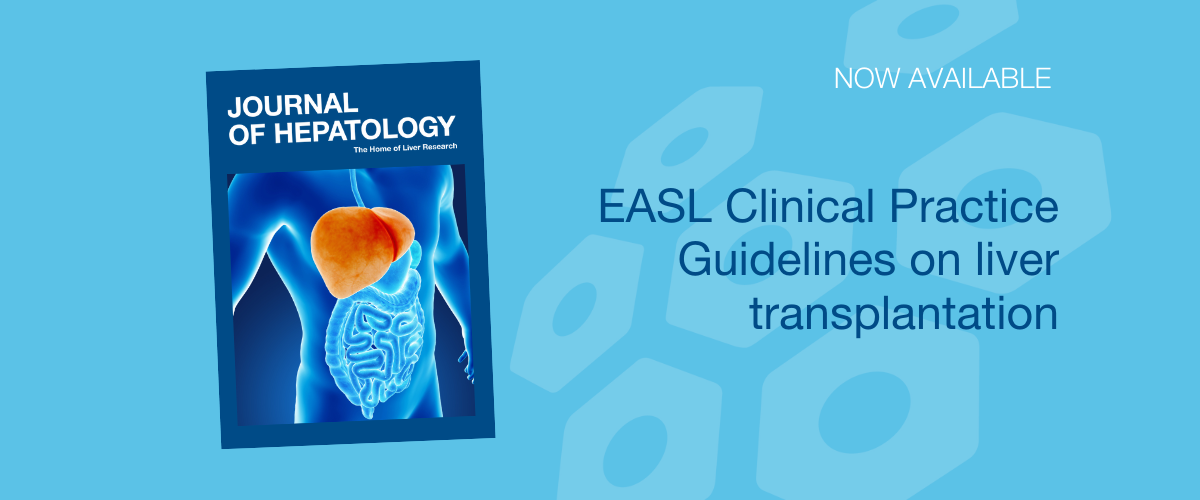New EASL Clinical Practice Guidelines on Liver Transplantation

EASL has released its updated Clinical Practice Guidelines on Liver Transplantation (LT). The guidelines represent a significant overhaul, reflecting major advancements in the field since the last update in 2016.
The field of liver transplantation (LT) has advanced significantly in recent years, and the new EASL Clinical Practice Guidelines on LT address these developments. Indications for LT have broadened, now including patients with acute-on-chronic liver failure and acute severe alcohol-related hepatitis. The guidelines also address disparities in access, highlighting the disadvantage faced by female candidates compared to males and the need for a more equitable allocation model. The evaluation of transplant candidates has received greater attention, particularly in areas like frailty and sarcopenia, and a comprehensive cardiovascular assessment is emphasised. Additionally, assessment protocols for liver-kidney transplantation have been updated.
Advances in transplant oncology have led to expanded eligibility for LT in patients with certain malignancies, showing promising results. Organ preservation strategies have also evolved with the advent of organ perfusion machines, revolutionising preservation and improving both donor pool expansion and organ quality. Recognising new forms of rejection and the effects of immunosuppression on long-term outcomes has led to a re-evaluation of immunosuppressive strategies. Finally, these guidelines underscore the importance of quality of life and the management of LT recipients transitioning from pediatric to adult services.
Key differences from the 2016 guidelines
Compared to the 2016 guidelines, the new version covers several previously unaddressed or minimally discussed topics, backed by recent evidence. These updates are intended as both an advancement and a complement to the previous guidelines.
One of the major new topics is the sex-based disparity in access to LT. Female candidates face higher waiting list mortality rates and are less likely to receive a transplant than male candidates. This issue is addressed with updated scoring systems like MELD 3.0, GEMA, and GEMA-Na, designed to mitigate inequities in organ allocation.
The 2016 guidelines did not discuss acute-on-chronic liver failure (ACLF), a complication now recognised in medical literature. The latest guidelines discuss the evaluation and transplantability of patients with ACLF grade 3 and above. Furthermore, the new guidelines expand the indications for LT to include acute severe alcohol-related hepatitis, severe autoimmune hepatitis with liver dysfunction, and severe neuropsychiatric symptoms of Wilson’s disease.
Selection criteria for LT candidates now include a more refined cardiovascular evaluation approach and new protocols for patients with severe obesity. The guidelines also address care for patients with porto-pulmonary hypertension and candidates for simultaneous or sequential liver-kidney transplants. The concepts of frailty and sarcopenia, which significantly impact post-transplant outcomes, represent novel considerations. New technical approaches have also been introduced for managing portal vein thrombosis.
In transplant oncology, the guidelines expand beyond the Milan criteria, incorporating the concept of downstaging and the use of immune checkpoint inhibitors. New evidence addresses LT for patients with colorectal and neuroendocrine metastases, intrahepatic, and perihilar cholangiocarcinoma.
The guidelines reflect a more inclusive approach to donor selection, with changes in the acceptance of donors with viral infections due to advances in hepatitis C virus (HCV) treatments. The introduction of machine perfusion techniques is another notable advancement, improving donor pool size and organ quality.
In immunosuppression, trends now lean toward reduced immunosuppression, with new entities like antibody-mediated rejection requiring tailored management. The recurrence of autoimmune and cholestatic diseases, as well as MASH, is covered in more depth. Lastly, the guidelines incorporate a focus on long-term quality of life, with guidance on the critical transition from paediatric to adult services.
Expected impact on patient outcomes and key challenges
These guidelines have the potential to improve patient outcomes in three primary areas:
Expanded LT access: Enabling evaluation for patients previously deemed too sick, lacking an identified indication, or having oncological contraindications.
Donor pool expansion and organ quality: Strategies include accepting donors with viral infections, using DCD donors, expanding LDLT programs, and integrating machine perfusion techniques to enhance organ quality.
Comprehensive post-transplant care: Addressing immunosuppression management, disease recurrence, and long-term quality of life with a focus on adherence and transition from paediatric to adult care.
Clinicians should be aware of the challenges of guideline implementation, which require time, resources, and a personalised approach to each patient. Research and engagement will be critical in bridging knowledge gaps and advancing future guidelines.
Collaborative development with global experts
The EASL collaborated closely with international experts, the EASL Governing Board, and a Delphi Panel, which contributed to and reviewed each stage of guideline development. The structured feedback loop allowed for diverse perspectives, ensuring that the guidelines reflect a global understanding of LT needs and advancements.
Enhanced accessibility via the EASL Guideline App
The new guidelines will soon be available on the EASL Guideline app, making it easy for healthcare professionals to consult them anytime, whether at the patient’s bedside or during a multidisciplinary meeting. This accessibility allows clinicians to answer pressing questions quickly—such as evaluating LT candidacy or determining assessment protocols—and streamline decision-making in clinical practice. This app-based access is expected to support faster, more efficient patient management and improve overall care delivery.


